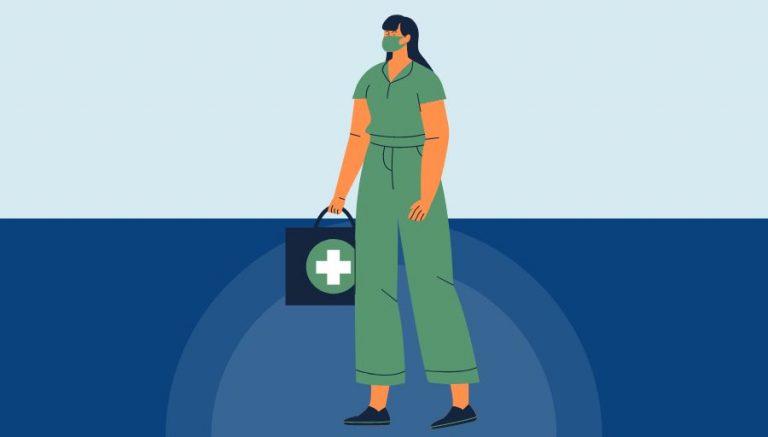How To Use CPT Code 92950
CPT 92950 refers to cardiopulmonary resuscitation, a procedure performed to restart the heart and lungs of a patient in cardiac arrest. This article will cover the description, procedure, qualifying circumstances, usage, documentation requirements, billing guidelines, historical information, similar codes, and examples of CPT 92950.
1. What is CPT 92950?
CPT 92950 is a medical code used to describe the procedure of cardiopulmonary resuscitation (CPR). This life-saving intervention is performed when a patient experiences cardiac arrest, and their heart and lungs need to be restarted to ensure oxygen supply to vital organs. The procedure involves chest compressions, artificial breathing methods, and other techniques to restore blood circulation and oxygenation.
2. 92950 CPT code description
The official description of CPT code 92950 is: “Cardiopulmonary resuscitation (e.g., in cardiac arrest).”
3. Procedure
The 92950 procedure involves the following steps:
- Assess the patient’s responsiveness and check for signs of breathing and pulse.
- Call for emergency medical assistance if the patient is unresponsive, not breathing, or has no pulse.
- Begin chest compressions by placing hands on the center of the patient’s chest and pushing hard and fast at a rate of 100-120 compressions per minute.
- After 30 compressions, provide two rescue breaths by tilting the patient’s head back, pinching their nose, and breathing into their mouth.
- Continue alternating between chest compressions and rescue breaths until the patient regains consciousness, emergency medical help arrives, or it becomes unsafe to continue.
4. Qualifying circumstances
A patient is eligible to receive CPT code 92950 services if they are experiencing cardiac arrest, which is characterized by the sudden loss of heart function, breathing, and consciousness. This can occur due to various reasons, such as heart attack, drowning, electrocution, or drug overdose. The primary goal of CPR is to restore blood circulation and oxygenation to the brain and other vital organs, increasing the chances of survival and reducing the risk of permanent brain damage.
5. When to use CPT code 92950
It is appropriate to bill the 92950 CPT code when a healthcare provider performs cardiopulmonary resuscitation on a patient in cardiac arrest. This includes situations where the provider initiates CPR in an outpatient setting, during transport, or as part of inpatient care. The code should be used regardless of the outcome of the resuscitation attempt.
6. Documentation requirements
To support a claim for CPT 92950, the following information should be documented:
- Patient’s medical history and presenting symptoms
- Details of the cardiac arrest event, including the time, location, and circumstances
- Duration and frequency of CPR performed
- Techniques used during resuscitation, such as chest compressions, rescue breaths, and any additional interventions
- Response to CPR, including any changes in the patient’s condition or vital signs
- Outcome of the resuscitation attempt, including whether the patient regained consciousness or required further medical intervention
7. Billing guidelines
When billing for CPT code 92950, it is essential to follow the appropriate guidelines and rules. These may include:
- Ensuring that the documentation supports the medical necessity of the CPR performed
- Using the correct modifiers, if applicable, to indicate the setting or circumstances of the resuscitation attempt
- Reviewing payer-specific policies and requirements for billing CPR services
- Being aware of any additional codes that may apply to the patient’s care, such as critical care services or advanced life support interventions
8. Historical information
CPT 92950 was added to the Current Procedural Terminology system on January 1, 1990. There have been no significant updates to the code since its addition.
9. Similar codes to CPT 92950
Five similar codes to CPT 92950 and how they differ are:
- CPT 92960: This code refers to cardioversion, a procedure used to restore a normal heart rhythm in patients with certain types of abnormal heartbeats.
- CPT 92961: This code is used for cardioversion performed in conjunction with an electrophysiologic study, which involves testing the electrical activity of the heart.
- CPT 99291: This code represents critical care services provided by a physician for the first 30-74 minutes of care.
- CPT 99292: This code is used for each additional 30 minutes of critical care services provided by a physician.
- CPT 99460: This code describes neonatal resuscitation, a specialized form of CPR performed on newborns who require assistance with breathing or circulation immediately after birth.
10. Examples
Here are 10 detailed examples of CPT code 92950 procedures:
- A patient collapses in a physician’s office due to a heart attack, and the physician performs CPR until emergency medical services arrive.
- A patient in a hospital experiences cardiac arrest, and the medical team initiates CPR, including chest compressions and rescue breaths, until the patient’s heart starts beating again.
- An individual drowns in a swimming pool, and a lifeguard performs CPR until the paramedics arrive and take over the resuscitation efforts.
- A patient in a rehabilitation facility experiences cardiac arrest due to a drug overdose, and the staff initiates CPR until the patient regains consciousness.
- An elderly patient in a nursing home experiences cardiac arrest, and the healthcare providers perform CPR until the patient’s heart starts beating again.
- A patient in a dental office experiences cardiac arrest during a procedure, and the dentist initiates CPR until emergency medical help arrives.
- An individual experiences cardiac arrest at a sports event, and a bystander trained in CPR initiates chest compressions and rescue breaths until medical personnel arrive.
- A patient in a dialysis center experiences cardiac arrest, and the healthcare providers perform CPR until the patient’s heart starts beating again.
- An individual experiences cardiac arrest at a shopping mall, and a security officer trained in CPR initiates chest compressions and rescue breaths until paramedics arrive.
- A patient in a hospital experiences cardiac arrest during a surgical procedure, and the surgical team initiates CPR until the patient’s heart starts beating again.



